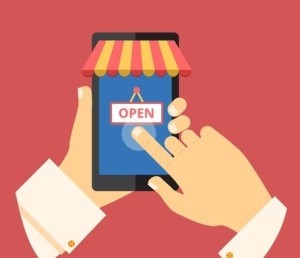The Power of APIs With POS Software
Traditional brick and mortar retail have been facing a dilemma for some time; brands either face disruption at the hands of web-based e-commerce or embrace new innovative technology. For large chains and independent retailers alike, adoption of new tools dictates their place in the future of shopping for the most part. Simply put, you must meet the customer online because that’s where they are.
The Greatest Innovations
APIs are powering some of the greatest innovations today. This isn’t news for app developers, as APIs are a common backbone supporting many new PaaS and SaaS. Shops are benefiting from integrating third party APIs, allowing them to avoid reinventing the wheel. As you may know, e-commerce necessities such as localization, chatbots, supply chain management, marketing automation, and other user-related experiences rely on APIs to function – to a great extent.
Commerce environments are constructing more responsive designs that cater better to omnichannel and hybrid distribution models by building upon agile software architecture.
POS Systems and API
POS systems such as Lightspeed are making API platforms available to developers and enterprising retailers, enabling the most innovative retail stores in the world to take their POS solutions to all-new destinations. Whether it’s a third party e-commerce plugin, custom loyalty program, an integration with a backend ERP system, or a mobile sales dashboard, POS API augment the needs and creative vision of your business.
POS system developers are hard at work creating the core of the API engine and expanding its popular front-end interfaces. Companies can then create and build out the custom tools needed to take their stores to the next level.
With POS software, APIs are fully based on web services and leverage the capacities of servers, granting access to the same framework used by the POS screen. In many cases, licensing is not restrictive. You don’t have to pay fees on apps you build or distribute.
Operational Technology: Security of the Future
OT (operational technology) refers to securing traditional operations and assets from cyber incidents due to the increased connectivity between cyber and physical realms. It involves software and hardware dedicated to causing or detecting changes in physical processes through direct control and/or monitoring of processes and events in an enterprise as well as physical devices such as valves and pumps.
OT uses computers to monitor or change the physical state of a system, for example a rail system control network. Examples of OT include computerized machine tools and scientific equipment.
In terms of cyber security, OT differs from IT in the number of gateways, the frequency of security patches, and the focus on data and confidentiality vs. process and control.
Number of Gateways
Simply put, IT has more gateways, which pose higher security risks because every gateway can be a hack waiting to happen. Considering that bots comprise almost two-thirds of network traffic, it’s easy to see why it’s so challenging for IT specialists to keep up with the bad guys. OT has a lower number of gateways, making it comparatively safer.
Frequency of Security Patches
Many IT vendors have a designated security update day of the week because of how frequent updates are. It’s easy for an attacker to find vulnerability. Often, weak points are discovered only in the wake of an attack. Security patches don’t work the same way in OT. Critical infrastructure cannot be rendered more or less reliable or available. Security cannot have an adverse effect the real-time operation of key infrastructure.
Data and Confidentiality vs. Process and Control
In OT, process and control dominate. That’s not the case in the world of IT, which layers defenses on top of one another, sometimes infinitely. Normally, industrial organizations operate a limited suite of control applications. The environment is generally static. Control is a priority in OT because loss of it could have horrible ramifications, such as water contamination.
Conversely, IT places a focus on data and confidentiality. It is all about storage, retrieval, manipulation, and transmission of digital information. Most companies want to guarantee smooth data flow. For example, Amazon wants to establish that credit cards are working and that it’s possible to use search and purchase histories to give customers suggestions on what else they could buy. None of these overlaps with OT’s physical realm of manual manipulation and process control.
IT places the main focus on confidentiality of data. Companies and their clients expect personal, financial, medical, and all other data to remain private.
Blurred Lines
From what you’ve read so far, you could draw the conclusion that OT and IT are two completely different things or that they have separate roles within an establishment at the very least. However, it seems this isn’t exactly true. As the industrial Internet emerged and networked software and sensors became integrated with complicated physical machinery and equipment, the two began to overlap.
Why are industrial systems being taken online? Delivering smart analytics is the main reason – in other words, people are using data the machines generate to change and optimize the manufacturing process.
The Implications of Broader Connectivity
In recent years, the industrial Internet has started to bring about broader Internet connectivity. This takes us back to one of our earlier points – more connections mean more security breach opportunities. There are concerns about physical risk and enhanced impact scope. An example of the latter is not being able to drive your car because someone hacked your engine control system.
IT hasn’t had to consider the element of physical risk so far. Machine malfunction or an interruption in service can cause production of faulty goods or physical harm to employees. IT needs to adopt some of the principles of OT to be able to prevent these and other risks.
Conclusion
APIs are more powerful and more secure with POS software, integrating IT with OT for maximum safety and ultimately improving one’s bottom line. We have yet to feast our eyes on the vast horizons of possibility afforded by this combination of cutting edge technologies.
About the Author: Lea Fowler
Content Writer. She manages all content management projects and is keenly interested in writing technology, CRM software and Business Software related topics.
(66)






